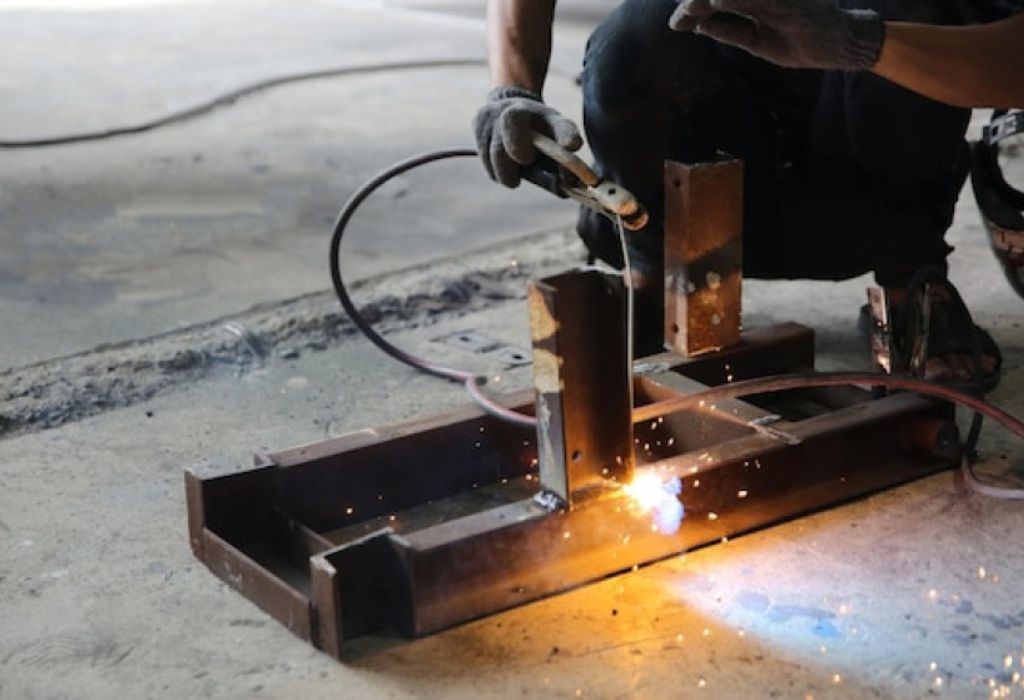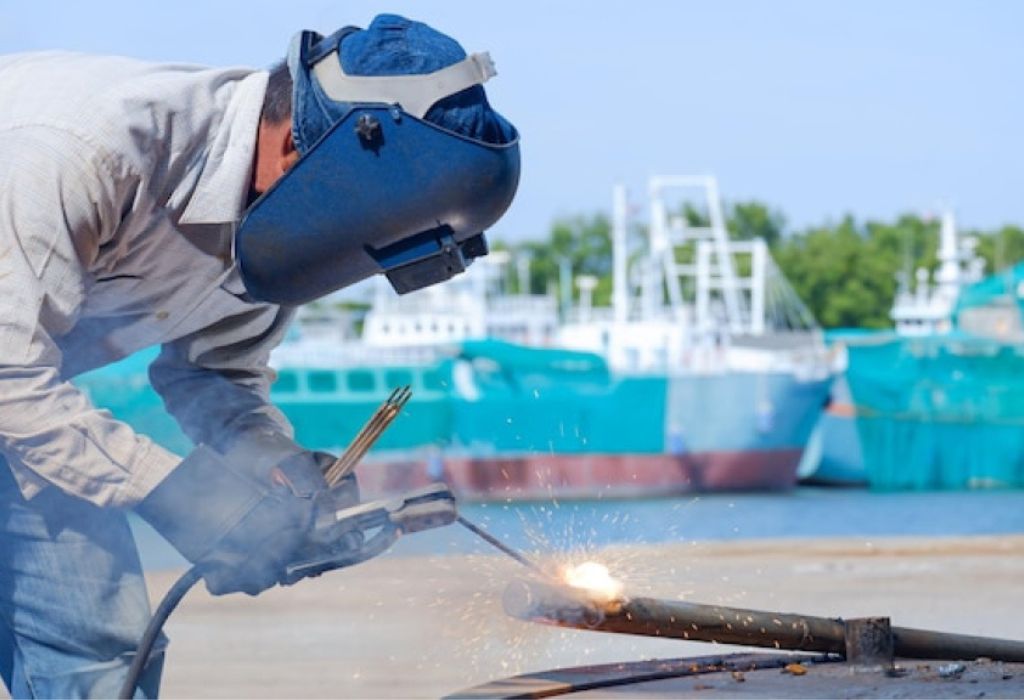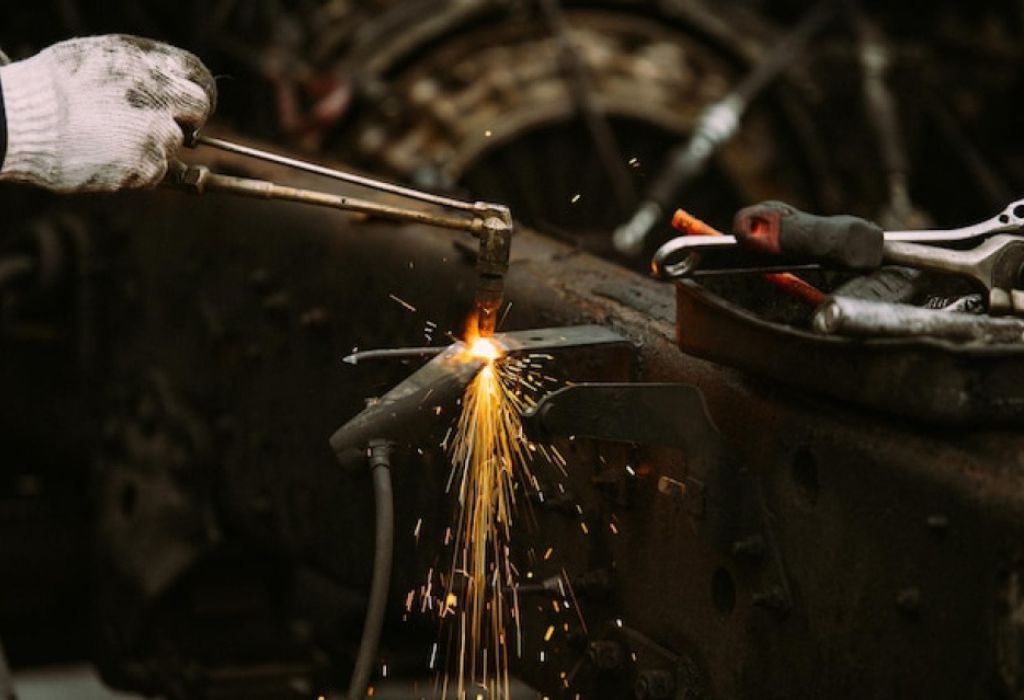A rig welder’s job begins where most people hesitate to go—remote oil fields, offshore rigs, and isolated drilling platforms.
The work is demanding, the environment is harsh, and the hours are long.
Yet, the reward lies in the paycheck, leaving many curious to ask: how much does a rig welder make an hour?
Across the United States, welding continues to be one of the most essential trades in heavy industry.
According to the U.S. Bureau of Labor Statistics, over 411,000 welding jobs exist nationwide source.
Among them, rig welders stand out as some of the highest earners, often making far more than shop-based welders.
For many, the thought of balancing on an offshore platform with sparks flying in extreme weather sounds intimidating. But for those who take on the challenge, the payoff is significant. I
n fact, some rig welders report hourly rates well above the national welding average, with opportunities to earn premium wages through overtime, per diem, and hazard bonuses.
The journey to uncover how much a rig welder makes an hour is not just about numbers. It is about understanding the risks, the skills, and the unique lifestyle that comes with the job.
This article explores the hourly pay in detail, breaking down averages, factors that influence wages, and strategies for welders aiming to maximize their income.
What Does a Rig Welder Do?

Rig welders specialize in some of the toughest and most demanding welding jobs in the world. They work on oil rigs, drilling platforms, and pipelines, often in remote or offshore environments.
Their main responsibility is to ensure the integrity of pipelines and structural components that keep rigs operating safely. This means working with steel, pipelines, and heavy equipment in conditions that demand precision and endurance.
The job often requires advanced certifications, strict safety compliance, and the ability to weld in multiple positions. Unlike shop welders, rig welders face unpredictable weather, long hours, and high-risk tasks that justify their higher hourly pay.
What is a rig welder?
A rig welder is a specialized professional who performs welding on oil rigs, drilling platforms, and pipelines.
What tasks does a rig welder perform?
Their tasks include welding pipes, repairing equipment, and maintaining structural safety in energy operations.
Is rig welding the same as pipeline welding?
Rig welding often overlaps with pipeline welding, but it includes broader structural and offshore work.
Do rig welders work offshore or onshore?
Rig welders can be stationed offshore on platforms or onshore in remote drilling fields.
What certifications are required for rig welders?
Common requirements include pipe welding tickets, AWS certifications, and safety training specific to oil and gas environments.
National Average & Hourly Rate Trends
Rig welders consistently rank among the best-paid welders. Their hourly wages often exceed national welding averages due to the risks and demands of their jobs.
Recent data from ZipRecruiter shows that rig welders earn an average of $36–$44 per hour, with top performers making as much as $60 or more. The wide pay range reflects differences in experience, certifications, and location.
Hourly rates have steadily increased as demand for skilled welders rises in energy and construction. Industry reports note that welders with specialized rig experience often see pay growth faster than standard fabrication welders.
Q&A Sub-Section
How much does a rig welder make per hour on average?
Rig welders typically earn $36–$44 per hour according to recent surveys.
What is the lowest hourly rate for a rig welder?
Entry-level welders may earn around $20–$25 per hour.
What is the highest pay per hour?
Some rig welders with experience and offshore roles earn $60+ per hour.
Does pay vary by state or region?
Yes, states with strong oil and gas industries like Texas or Alaska offer higher hourly rates.
How has the hourly rate changed over time?
Rates have grown as skilled welding shortages continue, especially in energy sectors.
Key Factors Influencing a Rig Welder’s Hourly Pay
Several factors shape how much a rig welder makes an hour. Experience, certifications, and job location are the most significant.
Offshore work typically commands higher hourly rates due to harsher conditions. Union membership, overtime, and hazard pay can also increase earnings.
Does experience increase the hourly rate?
Yes, experienced rig welders earn significantly more than entry-level workers.
Do certifications or tickets matter?
Specialized certifications, such as pipe welding or AWS endorsements, raise hourly wages.
How much does location impact pay?
Pay can differ by $10–$15 per hour depending on state and region.
Do hazards or overtime boost pay?
Yes, dangerous jobs and long shifts usually come with premiums.
Does union membership change wages?
Union rig welders often receive better hourly pay and stronger benefits packages.
Hourly Pay by Region, State & Offshore vs Onshore

Geographic location plays a huge role in rig welder salaries. Texas, Alaska, and the Gulf Coast states are known for some of the highest hourly rates.
Offshore welders generally earn more than their onshore counterparts due to the added difficulty and isolation of the work. International opportunities in regions like the Middle East also pay competitive wages.
What is the hourly rate in Texas?
Rig welders in Texas often earn $38–$45 per hour.
How much do rig welders make in California?
Rates in California range from $30–$42 per hour.
Do offshore rigs pay more per hour?
Yes, offshore jobs usually pay 10–20% more than onshore.
How does pay differ internationally?
Countries with booming oil sectors, such as Saudi Arabia, offer high pay but strict work conditions.
What about remote inland rigs?
Remote onshore rigs often pay higher wages to attract talent.
Income Breakdown Beyond Hourly Wage
Hourly pay is just part of a rig welder’s income. Many also receive per diem allowances, bonuses, and overtime pay.
Per diem covers food and lodging, while split checks and contract work can add significant income. Hazard pay is common in offshore assignments.
What is per diem and how is it paid?
It is a daily allowance for meals and lodging, often tax-free.
What is split check pay?
A method where wages are divided into taxable and non-taxable portions.
Are bonuses common for rig welders?
Yes, performance and contract bonuses are frequent.
Do rig welders get overtime pay?
Overtime rates often exceed 1.5 times the base hourly rate.
What are typical deductions?
Taxes, insurance, and union dues are common deductions.
Sample Hourly Scenarios & Real Examples
To illustrate pay, consider three scenarios. A new rig welder in Oklahoma might make $24 per hour with basic benefits.
A mid-level welder in Texas could earn $40 per hour plus per diem. An experienced offshore welder in Alaska might command $60 per hour with significant overtime opportunities.
What did a junior rig welder in a rural area earn per hour?
Around $24–$26 per hour.
How much did a seasoned rig welder on offshore jobs make?
Often $55–$65 per hour with bonuses.
Are there extremes reported?
Yes, some welders earn below $20 per hour, while elite offshore jobs exceed $70.
Do forum reports match official data?
Anecdotal data often shows higher ranges due to bonuses and overtime.
What factors made those scenarios different?
Experience, location, and type of rig were the main drivers.
Tips to Boost Hourly Earnings
Rig welders can increase income by gaining advanced certifications, taking on hazardous jobs, or relocating to higher-paying states.
Networking, staying updated on safety standards, and being flexible with assignments also help raise hourly pay.
Which certification yields the biggest pay bump?
Pipe welding and AWS endorsements often lead to higher wages.
Does specializing in underwater welding help?
Yes, underwater welding is among the highest-paying specialties.
Is it worth relocating for higher pay?
Yes, moving to high-demand states can add $10+ per hour.
How to negotiate rig welder pay?
Use experience, certifications, and location demand as leverage.
Should one favor contract or staff positions?
Contract jobs usually offer higher hourly rates but fewer benefits.
Risks, Trade-Offs & Challenges

Rig welding offers high pay but comes with risks. Welders face harsh environments, long hours, and demanding physical conditions.
The work is often seasonal or dependent on oil markets, leading to income fluctuations. Safety is always a priority due to the hazards involved.
Q&A Sub-Section
What risks do rig welders face?
Risks include burns, explosions, and extreme weather.
Is burnout common in this job?
Yes, long shifts and remote work can lead to fatigue.
How stable is this work over time?
It depends on oil demand, which can fluctuate significantly.
Do market downturns affect pay?
Yes, wages can drop when energy markets slow down.
What safety standards must be followed?
Rig welders must follow OSHA and company-specific safety rules.
Future Trends & Outlook
The demand for rig welders remains tied to global energy needs. Oil and gas projects continue to drive opportunities, while new sectors like offshore wind may also expand demand.
Automation may change some processes, but skilled rig welders will still be necessary for complex and high-risk tasks.
Will demand for rig welders grow or shrink?
Demand is expected to remain steady in oil and energy.
Will new tech reduce hourly rates?
Automation may reduce some tasks but not complex welding jobs.
Are welders moving into renewable sectors?
Yes, some are transitioning to offshore wind and energy infrastructure.
Do international markets offer higher pay?
Yes, regions like the Middle East and Canada offer competitive rates.
What skills will be in demand in future?
Advanced welding methods and safety expertise will be highly valued.
Conclusion
So, how much does a rig welder make an hour? The answer depends on experience, certifications, and location, but averages range from $36 to $44, with top roles exceeding $60 per hour.
Rig welding is demanding and risky, but the financial rewards reflect the challenges. With the right skills and choices, welders can maximize their hourly earnings and secure a stable, lucrative career path in one of the most respected trades.

I’m Darrell Julian, the founder, lead writer, and hands-on welding enthusiast behind ArcWeldingPro.com. With more than 15 years of real-world welding experience, I created this platform to share what I’ve learned in the field, in the shop, and in the heat of the arc.


